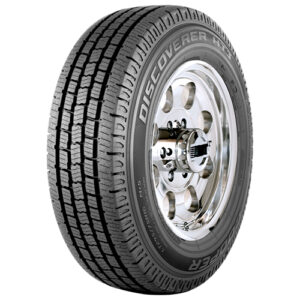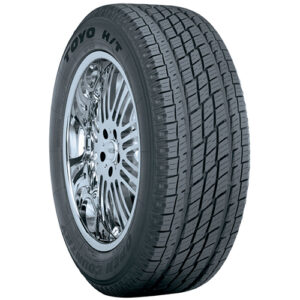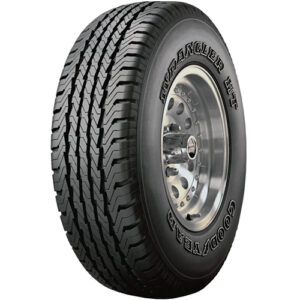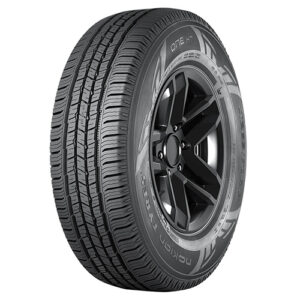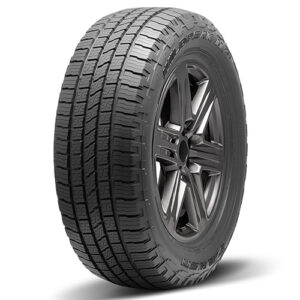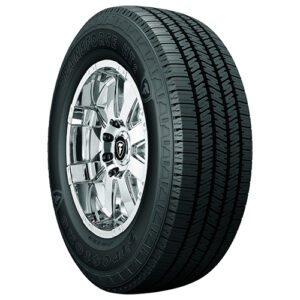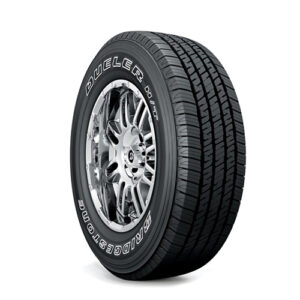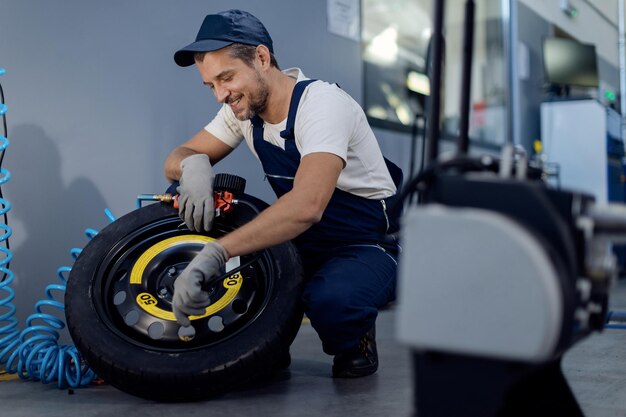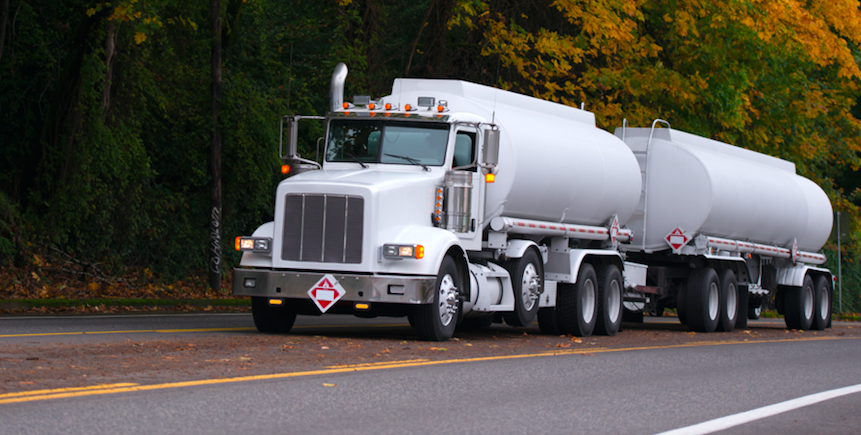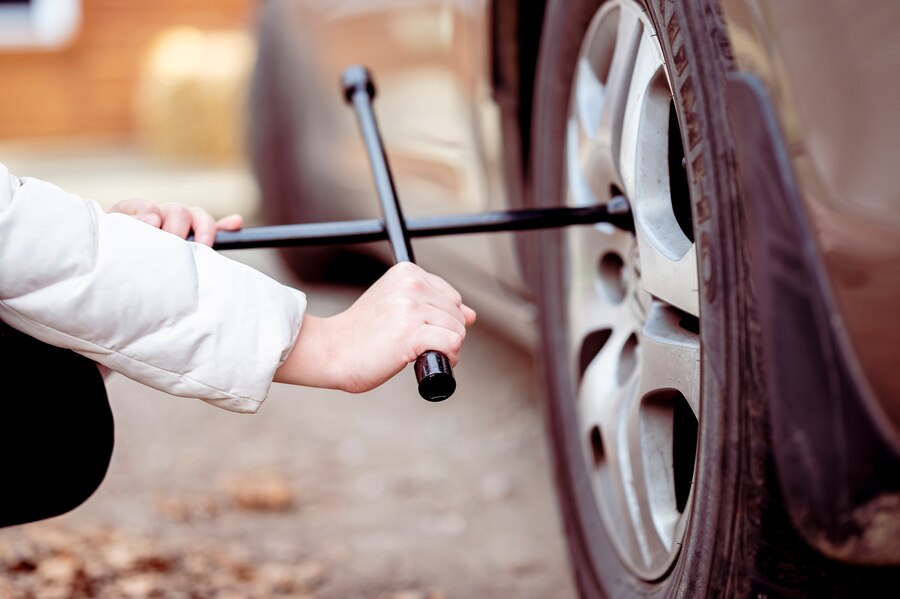Last Updated on April 21, 2024
Your Ultimate Guide to Buying a Used RV
Many things have changed in the past few years, from how we travel to the vacations we plan. Perhaps one of the most significant changes is the skyrocketing popularity of RV living and exploring.
In the fall of 2020, roughly 61 million Americans reported to the RV Industry Association that they planned to take an RV trip within the following year. A quarter of these respondents stated they would likely purchase an RV within the next year.
In 2021, RV ownership was at a record high of 11.2 million households. People want the option to travel safely without the hassle of booking hotels, sacrificing comfort, or worrying about cancellations. Buying a used RV (or a new one) is a great way to do that.
Are you thinking of making your family memories in a motorhome? Here are six checklist items that will help you learn what to look for when buying a used RV and if it’s a good purchase.
Obtain the Previous Owner’s Information
When shopping for a used product, including an RV, you must learn about the current owner and the item’s history. If you’ve found a previously owned RV you like, ask the seller:
– Are you the current owner? If not, who is?
– Where did this RV come from before this? A dealership?
– What is the RV’s VIN?
Don’t take the seller’s word at face value. If possible, use the VIN and any other available information to do a little research. You can contact the DMV for ownership details or use an online database to obtain a vehicle history report.
A Comprehensive Guide to RV Tire Inspection
Because RVs are often driven across the country or on long trips, there’s a good chance the RV’s current tires have covered a lot of land. Our second tip for buying a used RV is to ask about the vehicle’s mileage and tires. Even better is asking to see tire mounting and rotating records. Some Class B and C motorhome tires have a mileage warranty, so you need to understand how many miles the tires are in that warranty.
It is imperative to inspect the tire’s physical appearance. Is the tread worn down below near 2/3? Check for cracks, bubbles, dents, or any damage to the tire sidewalls. Answering these questions will indicate how well the current owner has maintained the RV and its tires.
If the tires are in poor shape, you will want to consider that when negotiating the price or request that the current owner replace them before you buy. Always verify the tires on the RV are appropriately rated for the load rating of the RV. Sometimes, people replace tires with less expensive tires when selling, and a tire that does not have the proper load index and ply rating can be dangerous for all those in the vehicle and potentially others on the road.
Buying a Used RV: Your Complete Checklist for a Wise Investment
If you’re in the market for a used RV, you’re likely embarking on a thrilling journey of exploration and adventure. But before you hit the road, there’s one critical step you must take – buying a used RV. This decision is no small feat, as it involves a substantial investment. We’ve compiled a comprehensive checklist for buying a used RV to ensure you make an intelligent and informed choice. Whether you’re a seasoned RVer or a first-time buyer, this guide will help you confidently navigate the process.
Step 1: Define Your Needs and Budget
Your RV journey begins with clearly understanding your needs and financial boundaries. Determine the size of your travel party, the type of trips you plan to take, and, most importantly, your budget. This initial step will help you narrow down your options and prevent overspending.
Step 2: Research RV Types and Brands
RVs come in various shapes and sizes, from motorhomes to travel trailers, fifth wheels, and campervans. Each type offers unique advantages and drawbacks. Research the different RV types and explore reputable brands known for their reliability and quality.
Step 3: Set Realistic Expectations
While buying a used RV can save you money, remember that it may not be in perfect condition, especially if it’s seen its fair share of adventures. Set realistic expectations and be prepared for some wear and tear. However, a thorough inspection can help you identify and address any issues upfront.
Step 4: Inspect the Exterior
Start your RV inspection with a careful examination of the exterior. Look for visible signs of damage, such as dents, scratches, or rust. Pay special attention to the roof, as water damage can be a significant concern. Additionally, assess the condition of the tires to ensure they have sufficient tread and are free of cracks.
Step 5: Evaluate the Interior
Step inside the RV and scrutinize the interior. Check for any indications of water damage, including stains, soft spots on the floor, or musty odors. Test all appliances – the stove, refrigerator, air conditioner, and heating system – to confirm they are in working order. Inspect the upholstery, flooring, and cabinetry for signs of wear and tear.
Step 6: Assess the Mechanical Systems
One of the most crucial aspects of buying a used RV is evaluating its mechanical systems. If you’re considering a motorhome, have a mechanic inspect the engine, transmission, brakes, and suspension. For towable RVs, assess the axles, hitch, and frame. Identifying and addressing potential mechanical issues is essential to a trouble-free journey.
Step 7: Review Maintenance Records
Ask the seller for maintenance records and documentation of any repairs or upgrades. A well-maintained RV is more likely to be reliable and have a longer lifespan. Reviewing maintenance records can also provide insights into how the RV was cared for by its previous owner.
Step 8: Conduct a Test Drive
If you’re eyeing a motorhome, take it for a test drive. Please pay close attention to how it handles on the road, the engine’s performance, and any unusual noises or vibrations. If you plan to tow your RV, ensure that your towing vehicle can safely handle the RV’s weight.
Step 9: Negotiate the Price
Once you’ve completed your inspection and are satisfied with the RV’s condition, it’s time to negotiate the price. Research the market value of similar RVs to establish a fair price range. Be prepared to walk away if the seller is unwilling to meet your budget or address necessary repairs.
Step 10: Finalize the Paperwork
Before finalizing the purchase, ensure that all necessary paperwork is in order. This includes the title, bill of sale, any warranties or guarantees, and a written agreement outlining the terms of the sale.
Step 11: Plan for Ownership Costs
RV ownership involves ongoing expenses beyond the purchase price, including insurance, fuel, maintenance, campground fees, and any required upgrades or modifications.
Step 12: Hit the Road
With the purchase complete, it’s time to embark on your RV adventures. Enjoy the freedom and excitement of RV travel, and maintain your RV diligently to ensure years of memorable journeys.
Buying a used RV can be a gateway to a world of exploration, but it’s crucial to approach it with care and diligence. By following this comprehensive checklist, you can make a wise investment and look forward to countless adventures on the open road. Happy RVing!
Ready to find the perfect used RV for your travels? Explore various options and confidently start your journey at Tire Easy.
Tires Easy Trucks Recommendations for RV Tires
Should you decide to buy a used RV that needs a tire replacement, we’ve got a couple of suggestions for you. Here are seven options from the top RV tire brands on the market. It would be best if you had tires you could trust, and these are all highly reliable and durable.
1. Cooper Discoverer HT3
Our first recommendation is the Cooper Discoverer HT3, a premium light truck commercial highway perfect for Class B and C motorhomes. It gives drivers an excellent amount of traction in both wet and dry conditions. The tire also features:
– Lateral grooves for improved handling
– Interlocking tread elements for stability
– Construction elements that resist irregular wear
This is a good choice if you’re looking for an RV tire that will last for years and safely get you to your final destination. The Cooper Discoverer HT3 starts at $155 per tire.
2. Toyo Open Country H/T
Next up is the Toyo Open Country H/T tire, an all-season tire that will give you the comfort and resiliency you need to travel across the country in various weather and road conditions. It features:
– A new tread rubber formulation for longer tread-wear
– Re-designed casing with three belts for strength
– Improved rigidity for excellent handling
The Toyo Open Country H/T is a versatile tire for RVs and high-torque diesel truck towing trailers. It starts at $127 per tire.
3. Goodyear Tires Wrangler HT
Next is the Goodyear Wrangler HT, an all-season highway tire perfect for class B and C motorhomes. It features:
– A solid center rib for even tread wear
– Circumferential grooves that help prevent hydroplaning
– Elements that contribute to a smooth, comfortable ride
When you own an RV, you want to know that its tires can handle rain and slippery roads. Check out the Goodyear Tires Wrangler HT, which costs $183 per tire.
4. Nokian Tires One HT
The Nokian One HT is another smart all-season tire choice for motorhome drivers. It features:
– Aramid Sidewall technology that protects the RV from potholes and obstacles
– Durable, cut-resistant sidewalls with stone ejectors
– Environmentally safe materials to minimize waste and emissions
The Nokian One HT might be suitable if you’re looking for an RV tire to stabilize dry, wet, and slick roads. It starts at $113 per tire.
5. Falken Tires Wildpeak H/T02
Rugged and durable, the Falken Wildpeak H/T02 is an all-season tire popular with many RV and truck drivers. It features:
– Advanced 4D design and 3D Canyon sipes for strong traction
– Rigid tread blocks and touch upper sidewalls
– An HD badge for heavy-duty construction/hauling capabilities
The Falken Wildpeak H/T02 is one tire you can trust when pulling heavy loads or driving a large motorhome. It starts at $137 per tire.
6. Firestone Transforce HT2
Another all-season option, the Firestone Transforce HT2, is excellent for B and C-class motorhomes. It features:
– An optimized tire profile to resist uneven wear
– Full-depth lateral slots to reduce the risk of hydroplaning
– Circumferential grooves for effective water evacuation
The Firestone Transforce HT2 is well-known for its rigidity and ability to maintain a biting grip on snowy or slick roads. It starts at $148 per tire.
7. Bridgestone Dueler H/T 685
Lastly, the Bridgestone Dueler H/T 685 is designed for long-lasting service on your many road trips. It features:
– Extra thick tread rubber and robust under belt materials
– A tread pattern that stays soft in cold weather
– Durable sidewalls for heavy-duty strength
When you purchase the Bridgestone Dueler H/T 685, you can rest assured that you’re choosing a tire that will last many years. It starts at $160 per tire.
Now, let’s return to the checklist for buying a used RV.
Look High and Low for Damage
Don’t just assess the tires for signs of wear and tear. Look for signs of water damage, rust, dents, cracks, and other problems throughout the motorhome. Although many of these issues are repairable, some are not, such as extensive water damage or significant undercarriage issues.
Test All the Electric Amenities
Electrical problems are all too common in motorhomes, especially older ones. You’ll need to check the various appliances and connections to understand what you’re working with.
We recommend testing light switches, kitchen appliances, air conditioning, and any power buttons – including the ones that trigger exterior lights, levelers, water heaters, and pumps.
Climb Up on the Roof
Next up on our used RV inspection checklist is a step many shoppers don’t take – and that’s a mistake. A damaged roof on a used RV can cause you much pain later on down the road.
Ask the seller’s permission, then climb up on the RV’s roof to look for dents, possible leaks, and water pooling areas. If you spot any of these issues, you may want to look for a better-quality motorhome.
Ask for Warranty and Maintenance Reports
This is a big one – especially if you don’t fully know how to inspect an RV independently, as most of us don’t. You need to understand what problems will be covered by warranty and which ones have already been addressed via maintenance and repairs in the past.
If the seller has no maintenance records or the warranty has already passed, you should request a professional RV inspection. You may also want to consider purchasing your extended warranty to protect your finances should problems manifest in the coming years.
Take It for a Test Drive
Finally, our last tip for buying a used RV: don’t forget to take it on a test drive before making any commitments. Whether buying from a used motorhome dealership or an individual, you must see how it rides; parks turns, and more.
Conclusion
There you have it – a simple but effective checklist to use when you want to buy a used RV. These tips will help you assess the state of the motorhome and determine what expenses it might incur in the future.
If you need new RV tires for your motorhome, don’t hesitate to contact Tires Easy. We’re here to help drivers of all vehicles, including RVs, find the right tires for their needs.
FAQs
What features should I look for when buying an RV?
When buying an RV, consider factors such as the RV’s size, layout, sleeping capacity, kitchen amenities, bathroom facilities, storage space, and towing capacity. Consider your specific needs, whether you want a motorhome or a towable trailer, and if you plan to use it for occasional trips or full-time living.
How long does an RV typically last?
The lifespan of an RV varies depending on factors like maintenance, usage, and build quality. Generally, well-maintained RVs can last for 20-30 years or more. Motorhomes tend to have a shorter lifespan than towable RVs, but proper care can significantly extend their longevity.
How can I determine the value of an RV before buying?
To assess an RV’s value, research its make, model, age, and condition. Online resources, RV appraisal guides, and discussions with experienced RV owners can help you gauge its market value. Consider having a professional inspection to identify any hidden issues.
How should I prepare my RV for use?
Before hitting the road, ensure your RV is roadworthy. Check the tires, brakes, and all mechanical systems. Inspect the plumbing, electrical, and propane systems. Pack essential supplies, including kitchenware, bedding, and safety gear. Familiarize yourself with RV operation manuals and practice setting up and breaking down camp.



